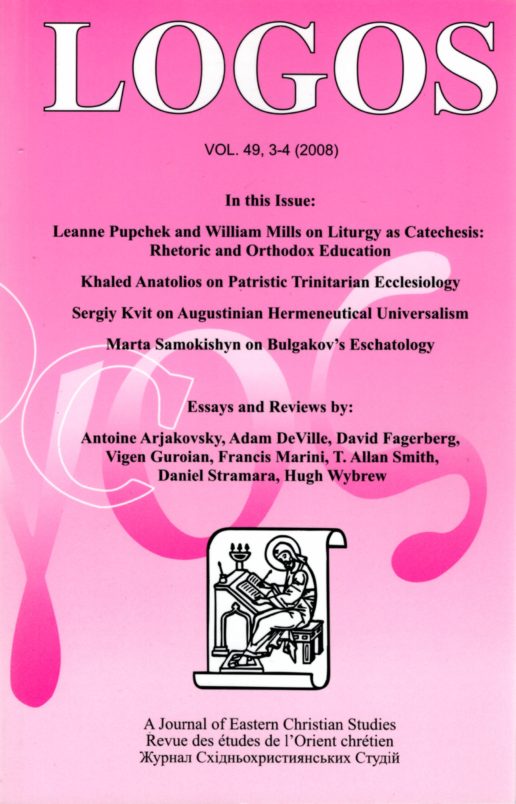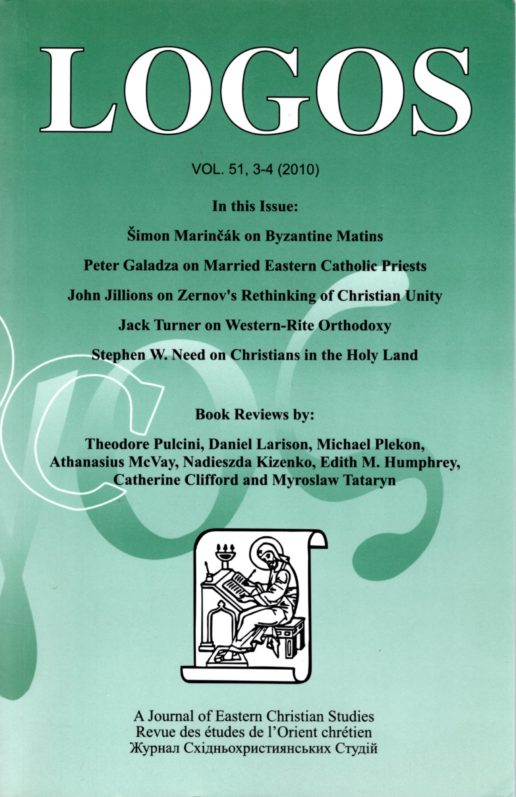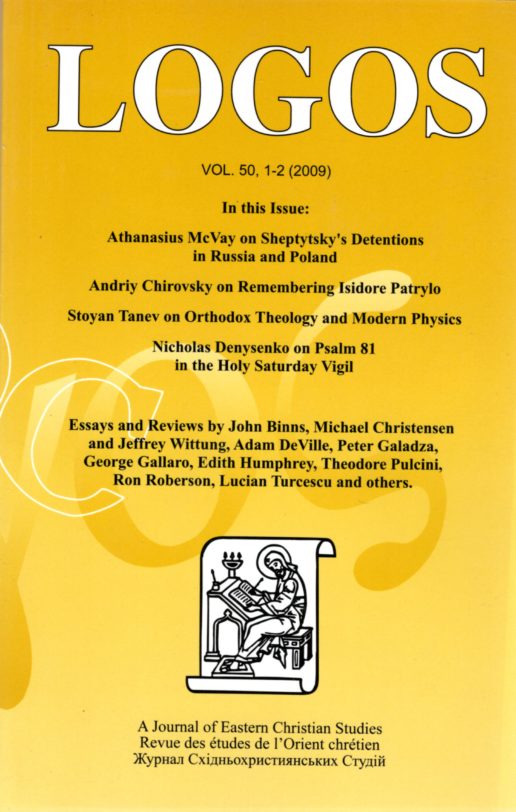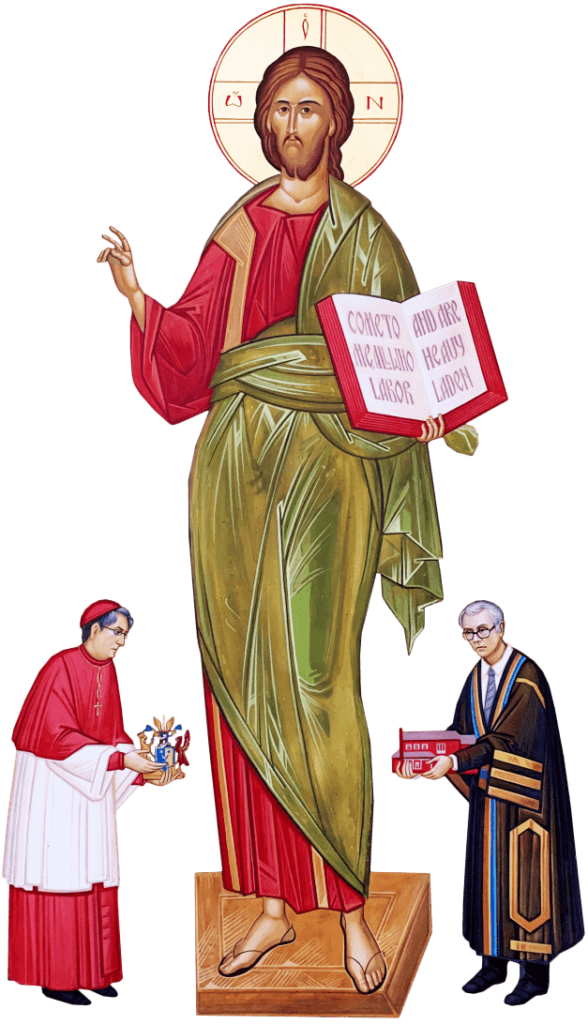Description
Table of Contents (PDF)
Editorials
† Bishop Ivan Khoma (Choma) (1923–2006): Scholar and Shepherd after the Lord’s Own Heart (283)
† Archimandrite Victor Pospishil (1915–2006): An Appreciation of a Pastoral and Scholarly Life (287)
Inspiration rather than Imitation: Seeing the Papacy of the Third Millennium through the Eyes of the First (289)
A Note from the Editor-in-Chief
Regarding Terminological Issues (301)
Articles
A New Development in the Malankara Catholic Church: Major Archiepiscopal Church or Catholicate (PDF)
John Madey (303)
Abstract
The author continues his study of the Syro-Malankara Catholic Church, of which he is a leading scholar. This current research is based on new ecclesiological developments within this Church, which has recently been raised to the rank of a major archiepiscopal Church sui iuris according to Catholic canonical norms. Madey traces the history of those developments in the canonical and conciliar literature, with special but not exclusive attention to the developments in the 20th century, chiefly in Cleri Sanctitati of Pope Pius XII; Orientalium Ecclesiarum of the Second Vatican Council; and the 1990 Code of Canons of the Eastern Churches. The author differentiates ecclesial structures and canonical norms in Oriental Churches governed by a patriarch, major archbishop, catholicos, or maphrian. He details the role and responsibilities of the catholicos in particular, especially his election, his relationship with the other bishops of his Church, his internal responsibilities to his Church, and his external relationship to the Church and bishop of Rome, with which he, as head of the Syro-Malankara Church, is in full communion.
Резюме
Автор, який є провідним науковцем та дослідником в галузі Сиро-Маланкарської Католицької церкви, продовжує її дослідження. Подана праця стосується нещодавніх еклезіологічних змін у цій Церкві, яку було підвищено до статусу Архиєпископської церкви свого права (sui iuris) згідно з католицькими канонами. Мадей простежує історію цих змін в канонічній та соборовій літературі, беручи також до уваги документи ХХ століття, насамперед такі як: Cleri Sanctitati ПапиПія XII; Orientalium Ecclesiarum ІІ Ватиканського Собору; Кодекс канонів Східних Церков 1990 року. Автор робить розрізнення між церковними структурами та канонічними нормами в Східній церкві, на чолі якої стоїть патріярх, архиєпископ , католікос або ж мафріян. А саме, він детально розглядає ролю та обов’язки католікоса, насамперед все, що стосується його обрання, його стосунки з іншими єпископами своєї церкви, його внутрішні обов’язки у відношенню до своєї церкви та його зовнішні відносини з Церквою та з єпископом Риму, з яким він як глава Сиро-Маланкарської церкви, перебуває в повному сопричасті.
Recovery and Discovery of Ecclesiological Balance: Orthodoxy’s Contribution at Vatican II and the East-West Encounter Today (PDF)
Will Cohen (327)
Abstract
December 2005 marked the 40th anniversary of the conclusion of the Second Vatican Council and in the weeks leading up to this anniversary official word was given of the recommencement of the international Orthodox-Catholic joint dialogue. In such a context, the author offers a retrospective reading of the conciliar documents and meetings to draw out the extent of Orthodox influence on the same. He next reviews the various Orthodox criticisms of the council, chief among which is that some of its reforms did not go far enough, particularly in the areas of collegiality and greater autonomy of local Churches and, above all, in attempting to overcome the ecumenical hurdle which is the First Vatican Council. On this latter point, the author refers to the recent study of Hermann Pottmeyer, Towards a Papacy in Communion, as offering some possible directions around this hurdle. Finally, the author notes that both Orthodox and Catholics need to continue research on ecclesiological models of the first millennium, all the while realizing that such historiography can be (in Robert Taft’s phrase) instructive but not normative, not least because there is no one single model in the first millennium and because the context in which such models were created is irretrievably removed from our own.
Резюме
В грудні 2005 року минуло 40 років відтоді, як завершився ІІ Ватиканський собор і саме тиждень перед цією знаменною датою офіційно пролунали слова про відновлення спільного православно-католицького діялогу. Саме на тлі цих подій, автор пропонує знову перечитати соборові документи та рішення, щоб з’ясувати до якої міри саме Православ’я вплинуло на них. Тоді він розглядає різні критичні думки щодо Собору, чільне місце серед яких посідає думка про те, що деякі реформи не були повністю втілені в життя, а саме ті, що стосуються колегіяльності та більшої автономії помісних церков, а насамперед спроба подолати екуменічну перепону, якою став І Ватиканський собор. Саме цю останню думку автор розглядає в контексті недавньої праці Германа Потмеєра До папства в сопрчасті, на основі якої, автор пропонує можливі шляхи подолання цієї перешкоди. На завершення він зазначає, що як католики так і православні повинні і надалі досліджувати еклезіологічні моделі першого тисячоліття, водночас усвідомлюючи, що така історіографія (за Робертом Тафтом) може бути лише повчальною а не нормативною власне тому, що в першому тисячолітті не існує жодного такого моделя, та й контекст, в яко
Congregational Singing in the Rus’ Liturgical Traditions: An Evaluation of Its History, Appendix (39 p.) (PDF)
Melita Mudri-Zubacz (347)
Abstract
By means of original research into various liturgical and musical manuscripts, especially those pertaining to the East-Slavic Churches as found in the Hilandar Research Library and Resource Centre for Medieval Slavic Studies, the author demonstrates that the eclipse which congregational singing suffered among the East-Slavic Churches during the latter part of the second millennium was an inorganic development of an earlier tradition in which the lay people, aided by various “musical ministers” and led by the clergy, retained pride of place in singing the responses and participating actively in the eucharistic liturgies as well as the other services such as matins, vespers, and compline. This eclipse of lay congregational participation was brought about in part by the rise of choral ensembles, polyphonic arrangements, and increasingly vastly—and in some cases needlessly—complicated settings of liturgical chant, all of which required trained “specialists” whose role came, in most Churches, to supplant entirely the role of the laity, who were thus rendered passive, mute spectators, deprived of the spiritual benefits which attend fuller participation in the liturgy.
Резюме
Автор безпосередньо досліджує різні літургійні та музичні рукописи, зокрема ті, що стосуються східних слов’янських церков, які знаходяться в Гайлендерській науковій бібліотеці та дослідницькому центрі середньовічних студій. За допомогою цих документів автор показує, що занепад співу церковної громади, який переживали східні слов’янські церкви впродовж останньої частини другого тисячоліття був невластивим розвитком ранішої традиції, в якій миряни під керівництвом дяків та духовенства, брали активну участь своїм співом у Літургії та інших відправах таких як Утреня, Вечірня та Повечір’я. Цей занепад відбувався поступово, в міру того, наскільки популярнішим ставав хоровий спів та ускладнювався, подекуди абсолютно непотрібно, літургійний спів. Такі нововведення потребували вишколених музикантів, які в більшості церквах перебирали на себе ролю мирян, а ті в свою чергу, перетворювалися на пасивних німих спостерігачів, позбавлених духовного блага брати повну участь в Божественній Літургії.
Documents
Pastoral Letter of the Ukrainian Catholic Hierarchy in Canada to the Clergy, Religious, Monastics and Faithful: On the Creed and the Filioque (455) (Open access article)
Пасторальний Лист Української Католицької Єрархії в Канаді Духовенству, Монахам, Ченцям і Всім (461)
Archival Sources for the Study of Eastern Christianity at the Library and Archives of Canada (467) (PDF sample)
Ruthenian Easter – And a French Catholic Priest: A Scene from Emigrant Life (477)
My Dinner Among the Indians From “Scenes from Canada” (483)
Scenes from Canada: II Sunday in Ottawa (489)
Fr. P. Filas about Canadian Rus’ (495)
Notes, Essays, Lectures
Prospects for Catholic-Orthodox Relations: Toward a New Beginning (PDF)
John A. Jillions (501)
The School of Paris and Eucharistic Ecclesiology in the Twentieth Century (PDF)
Antoine Arjakovsky (513)
The Way of a Pilgrim: A Synopsis of Recent Scholarship on a Spiritual Classic (PDF)
Suzette Phillips (525)
Book Reviews
Lucian Turcescu, ed., Dumitru Stăniloae:Tradition and Modernity in Theology
Andriy Chirovsky (543)
Andreas Andreopoulos, Metamorphosis: The Transfiguration in Byzantine Theology and Iconography
Shawn Tribe (552)
David Bentley Hart, The Beauty of the Infinite: The Aesthetics of Christian Truth
Brian Anastasi Butcher (556)
John Sianchuk, C.SS.R., ed., Blessed Bishop Nicholas Charnetsky, C.SS.R., and Companions: Modern Martyrs of the Ukrainian Catholic Church
Adam DeVille (561)
Peter Galadza, The Theology and Liturgical Work of Andrei Sheptytsky (1865–1944)
Andrew Quinlan (565)
Jim Forest, Confession: Doorway to Forgiveness
Stephen Wojcichowsky (569)
Antoine Arjakovsky, Entretiens avec le Cardinal Lubomyr Husar, Vers un christianisme post-confessionel
Philip J. Sandstrom (573)
Briefly Noted (579)
Books Received (593)
Contributors (607)
Language: English, French, Ukrainian
Softcover: vi, 352 pages
Publisher: The Metropolitan Sheptytsky Institute of Eastern Christian Studies
ISSN: 0024-5895
Digital File: $15
Size: 2 MB
A link to the PDF file of this title will be sent to you. The PDF file is for your personal use only. You may not copy, share, publish, or sell the file. Protected by copyright of the Metropolitan Andrey Sheptytsky Institute of Eastern Christian Studies.






